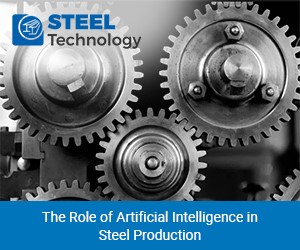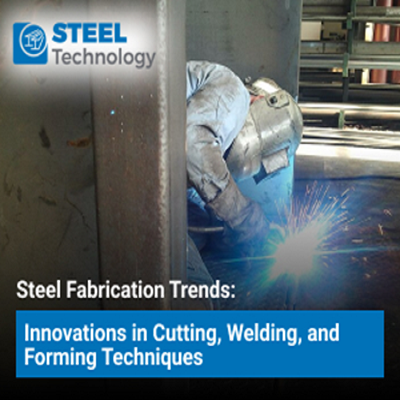Elevating Steel Manufacturing: The Role of Smart Sensors and IoT in Boosting Efficiency and Quality Control

Introduction:
In the constantly evolving domain of steel manufacturing, the incorporation of smart sensors and Internet of Things (IoT) devices stands as a groundbreaking development. This article delves into the transformative impact of smart sensor technology on steel production processes, highlighting how these innovations contribute to heightened production efficiency, stringent quality control, and advanced monitoring of equipment health.
1. Enhancing Production Efficiency:
Smart sensors play a pivotal role in enhancing production efficiency within the realm of steel manufacturing. These technological marvels streamline intricate processes, meticulously optimizing each stage to achieve maximum efficiency. By being embedded in machinery and production lines, these sensors continually gather real-time data, providing invaluable insights. This data-driven approach allows for predictive maintenance measures, mitigating the risk of unforeseen equipment failures and subsequently minimizing downtime. Real-world examples abound, showcasing instances where the implementation of Internet of Things (IoT)-driven systems has not only increased throughput but also resulted in substantial reductions in operational costs. The marriage of smart sensors and manufacturing processes is proving to be a catalyst for heightened productivity, ensuring a smoother and more cost-effective operation in the steel industry.
2. Real-Time Quality Control:
Smart sensors play a pivotal role in ensuring real-time quality control throughout the entire steel production cycle. Their distinctive advantage lies in the ability to monitor critical variables like temperature, pressure, and chemical composition at every stage of manufacturing. This continuous monitoring ensures that the steel produced adheres to stringent quality standards, maintaining consistency and reliability. By delving into case studies and examples, it becomes evident that smart sensors have emerged as a transformative force in the steel industry, significantly improving the overall quality assurance processes. These sensors act as vigilant guardians, not only upholding the standards but also fostering a level of precision and dependability in the final steel product that was previously unattainable.
3. Predictive Maintenance for Equipment Health:
Smart sensors play a pivotal role in ensuring the health and durability of manufacturing equipment. Their indispensable function involves the implementation of predictive maintenance strategies, seamlessly facilitated by Internet of Things (IoT) devices. By harnessing real-time data and advanced analytics, these sensors have the capability to foresee potential issues before they escalate into critical problems, effectively averting costly breakdowns. The impact of predictive maintenance goes beyond immediate issue prevention, positively influencing the overall lifespan of manufacturing equipment. This proactive approach not only strengthens the resilience of machinery but also results in a significant reduction in maintenance costs.
Consequently, steel manufacturing plants witness heightened operational efficiency, with equipment performing optimally and downtime minimized, signaling a transformative shift in industry practices.
4. Data-Driven Decision-Making:
The wealth of data generated by smart sensors in the steel industry empowers decision-makers by providing a comprehensive and real-time understanding of manufacturing processes. Through a nuanced examination of this data, decision-makers can unlock actionable insights, revolutionizing the way strategies are devised and implemented. The implementation of advanced data analytics and machine learning algorithms plays a pivotal role in extracting meaningful patterns and trends from sensor data. Instances abound where data-driven decision-making has driven substantial process optimizations, resulting in increased operational efficiency.
Moreover, the insights gleaned from smart sensors contribute to informed strategies for energy savings, aligning with sustainability goals. Across the industry landscape, this shift towards data-driven decision-making stands out as a catalyst for improved overall operational performance, offering a competitive edge and paving the way for continuous advancements in steel manufacturing.
5. Connectivity and Integration:
Delving into the interconnected realm of smart sensor networks in the steel manufacturing ecosystem reveals a highly integrated and responsive environment. The seamless integration of these smart sensors with existing systems, particularly Enterprise Resource Planning (ERP) software, plays a pivotal role in elevating the overall visibility and control over the manufacturing process. This connectivity ensures that data flows cohesively between various components, facilitating a comprehensive understanding of operations. The symbiotic relationship between smart sensors and ERP systems enhances the industry's ability to make informed decisions promptly. This integrated approach not only creates a more responsive steel production environment but also fosters adaptability to dynamic manufacturing needs, positioning connectivity as a cornerstone in the pursuit of operational excellence within the steel industry.
6. Challenges and Future Prospects:
In embracing the advantages brought about by the integration of smart sensors into steel manufacturing processes, it becomes imperative to acknowledge and tackle the associated challenges. The heightened connectivity and increased reliance on data exchange give rise to significant cybersecurity concerns, necessitating robust measures to protect sensitive information and preserve the integrity of manufacturing systems. Simultaneously, the adaptation of the workforce to these advanced technologies poses a challenge, demanding initiatives for upskilling and training. Despite these obstacles, continuous research and development in sensor technology hold the promise of ongoing advancements. The future may witness breakthroughs in sensor efficiency, data analytics, and enhanced cybersecurity protocols. As the industry navigates these challenges, it stands poised to reap the rewards of a more sophisticated and resilient steel manufacturing landscape. The unwavering commitment to innovation ensures a future where smart sensors play an even more integral role, reshaping the industry's capabilities and unlocking new possibilities.
Conclusion:
In conclusion, the integration of smart sensors and IoT devices stands as a transformative force, reshaping the very fabric of steel manufacturing. Beyond optimizing production efficiency, these technologies serve as the bedrock for ensuring stringent quality control and safeguarding the health of manufacturing equipment. This seamless amalgamation of innovation and sustainability not only signifies a paradigm shift in operational practices but also propels the industry into a new era. As steel manufacturers wholeheartedly embrace these advancements, they not only fortify their positions at the forefront of technological evolution but also pave the way for a more efficient, reliable, and competitive future. The marriage of smart sensors and steel manufacturing is not merely a technological upgrade; it's a commitment to excellence, efficiency, and a sustainable trajectory that defines the industry's trajectory in the years to come.










